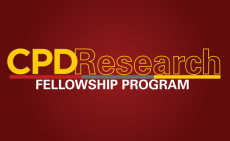The CPD Blog is intended to stimulate dialog among scholars and practitioners from around the world in the public diplomacy sphere. The opinions represented here are the authors' own and do not necessarily reflect CPD's views. For blogger guidelines, click here.
The Institute for Public Policy and Global Communication hosted a conference titled “Hillary Clinton and Global Women’s Issues: An Enduring Legacy?” Distinguished panelists including Ambassador-at-Large for Global Women’s Issues Melanne Verveer, each discussed the tremendous impact that the former Secretary of State Hillary Clinton had on women and girls worldwide.
This issue focuses on specific cases of U.S. public diplomacy with Iran, North Korea, and Cuba, and illustrates how engagement is used between states that have strained formal relations.

Summer and Fall 2012 CPD Visiting Scholar Natalia Grincheva authors a piece that analyzes the role of digital diplomacy and situates it theoretically within the philosophical work of Bernard Stiegler.
The Woodrow Wilson National Fellowship Foundation hosted a Google Hangout on the Practical Challenges for the Future of Public Diplomacy. The panelists include Syracuse University Professor, Guy Golan, Director of Communications and External Affairs at the Broadcasting Board of Governors, Lynne Weil, and Master of Public Diplomacy Alumni and Senior Policy Analyst at the American Security Project, Matthew Wallin. The panelists discussed a diverse practices of public diplomacy from international broadcasting and social media to nation branding.

The Center is now accepting applications from scholars and practitioners of public diplomacy for the 2013-2015 term. CPD Research Fellows will be expected to oversee a substantive research project that will yield at least two outputs, including one publication for the CPD Perspectives on Public Diplomacy series.
The Director of the USC Center on Public Diplomacy Professor Philip Seib, gave a talk at Chatham House on Real-Time Diplomacy: Politics and Power in the Social Media Era. Professor Seib began by describing the shift from conventional to real-time diplomacy, explaining that in the digital age diplomacy itself is changing. Additionally, Seib used case studies of Egypt and Tunisa to illustrate the speed at which news and media travels in real-time. After the talk, he took questions about various changes in technology and what it means for the future of public diplomacy.
The United States Department of State has created a new and innovative public diplomacy tool to engage youth from around the world. The online computer program, Trace Effects, transports youth from their home country to various cities and regions throughout the U.S., while learning English. The objective of the program is to engage global youth on a platform that they regularly use as a way to foster mutual understanding.
During President Obama’s recent trip to Israel, the country seized the opportunity to use social media as a tool to enhance their public diplomacy. Deputy Director of the Ministry of Public Diplomacy, Daniel Seamann, advocates that social media is one way that citizens can express their views about Israel and share their perspective and values with the world. New Media Director, Eddie Fraiman created a center during the Obama visit where Israeli citizens could come and post messages on various social media outlets.
Pages
POPULAR ARTICLES
-
June 5
-
June 18
-
June 6
-
June 5
-
May 8
-
June 19
-
May 15
-
June 5
Featured Blogger
Join the Conversation
Interested in contributing to the CPD Blog? We welcome your posts. Read our guidelines and find out how you can submit blogs and photo essays >.








